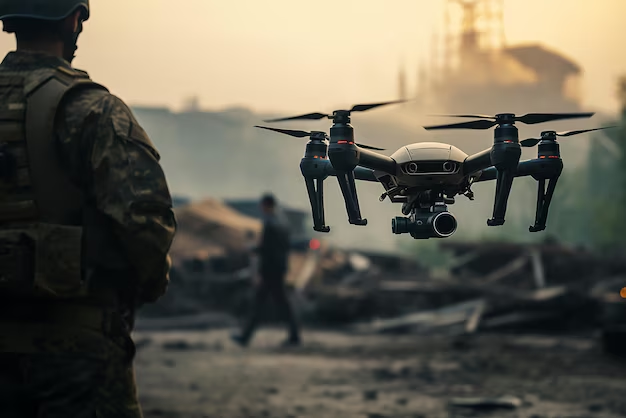As the aerospace industry advances toward greater automation and autonomy, the role of standardized avionics systems becomes increasingly critical. ARINC (Aeronautical Radio, Inc.) standards have long been a cornerstone of aviation, ensuring seamless communication, interoperability, and reliability across diverse avionics platforms. While traditionally associated with commercial and military aircraft, these standards are now shaping the future of Unmanned Aerial Vehicles (UAVs) and autonomous aircraft systems.
UAVs and autonomous aircraft rely on sophisticated avionics for flight control, navigation, communication, and mission execution. Given their diverse operational environments—ranging from military reconnaissance to commercial logistics and urban air mobility—standardized frameworks like ARINC are essential for ensuring safety, efficiency, and compliance with regulatory requirements. By adopting ARINC standards, UAV manufacturers and operators can integrate proven, high-reliability avionics systems, enabling interoperability with existing air traffic management (ATM) systems and ground control stations.
This article explores the role of ARINC standards in UAVs and autonomous aircraft systems, detailing their importance, key standards applicable to these technologies, real-world applications, challenges, and future implications.

Importance of ARINC Standards in UAVs and Autonomous Aircraft
As UAVs and autonomous aircraft systems continue to evolve, the need for standardized avionics becomes crucial. ARINC standards play a key role in ensuring seamless integration, interoperability, and safety in these advanced aerospace platforms. Their importance can be understood through the following key aspects:
1. Standardized Communication and Interoperability
UAVs and autonomous aircraft rely on multiple avionics components—such as flight control systems, navigation sensors, and communication links—that must function together in real-time. ARINC standards ensure a common communication protocol, allowing different subsystems to exchange critical data seamlessly. This standardization is particularly essential when integrating UAVs into existing airspace alongside manned aircraft.
2. Reliability and Safety Assurance
In mission-critical aerospace applications, system failures can have catastrophic consequences. ARINC standards provide robust guidelines for avionics hardware and software, ensuring that UAVs and autonomous aircraft meet stringent reliability and safety requirements. For example, ARINC 653 defines real-time operating system (RTOS) standards that enable time and space partitioning, preventing software faults from compromising overall system integrity.
3. Compliance with Aviation Regulations
As UAVs become increasingly integrated into commercial and military operations, compliance with aviation regulatory bodies such as the Federal Aviation Administration (FAA), European Union Aviation Safety Agency (EASA), and International Civil Aviation Organization (ICAO) is essential. ARINC standards align UAV avionics with these regulatory frameworks, facilitating approval for Beyond Visual Line of Sight (BVLOS) operations, airspace integration, and certification processes.
4. Enhanced Data Management and Network Efficiency
Modern UAVs generate vast amounts of data from sensors, cameras, and telemetry systems. ARINC standards like ARINC 429 and ARINC 825 define structured data bus communication, ensuring efficient, real-time data transmission, storage, and analysis. This enables UAVs to process mission-critical data quickly while maintaining secure, low-latency communication with ground control stations or other autonomous systems.
5. Seamless Integration with Existing Aerospace Infrastructure
One of the biggest challenges in autonomous aviation is ensuring UAVs can integrate smoothly with existing ATM (Air Traffic Management) systems. ARINC standards support this by defining standardized interfaces for navigation, data exchange, and communication with ground control stations, air traffic control (ATC), and manned aircraft. This reduces operational risks and facilitates safer urban air mobility (UAM) and advanced air mobility (AAM) applications.
6. Cybersecurity and System Integrity
With the increasing reliance on UAVs for defense, surveillance, and commercial applications, securing avionics systems against cyber threats is a top priority. ARINC standards include secure communication protocols that help mitigate cyber risks by ensuring data integrity, authentication, and encryption mechanisms for UAV networks. This is critical for maintaining the confidentiality and security of sensitive UAV operations.
7. Scalability for Future Autonomous Systems
The future of aviation lies in AI-driven autonomous flight and swarm UAV operations. ARINC standards provide a scalable foundation that enables future advancements, such as AI-powered decision-making, predictive maintenance, and adaptive flight control systems. By ensuring compatibility with evolving avionics technologies, ARINC paves the way for next-generation autonomous aerial systems.
Key ARINC Standards for UAV and Autonomous Systems
The successful operation of UAVs and autonomous aircraft depends on robust avionics systems that ensure seamless communication, navigation, and control. ARINC standards provide a structured framework for these systems, enabling interoperability, reliability, and compliance with aviation regulations. Below are the key ARINC standards relevant to UAVs and autonomous aircraft systems:
1. ARINC 429 – Avionics Data Bus Standard
Purpose: Defines the communication protocol for data transmission between avionics components.
- Used for point-to-point data exchange between sensors, flight control systems, and navigation units.
- Ensures reliable, unidirectional communication with error-checking mechanisms.
- Helps UAVs integrate with existing air traffic management (ATM) systems.
🔹 Application in UAVs: Essential for flight control and navigation, ensuring real-time data flow between avionics components.
2. ARINC 661 – Cockpit Display Interface
Purpose: Standardizes the Human-Machine Interface (HMI) for cockpit displays and ground control stations.
- Defines a universal graphical user interface (GUI) for avionics displays.
- Supports touchscreen interfaces, remote pilot stations, and mission control dashboards.
- Enables UAV operators to manage aircraft status, sensor feeds, and flight paths efficiently.
🔹 Application in UAVs: Enhances usability of ground control stations (GCS) for UAV pilots by standardizing display layouts and control interactions.
3. ARINC 818 – Digital Video Interface Standard
Purpose: Defines a high-speed video transmission protocol for avionics systems.
- Supports real-time video streaming with high resolution and low latency.
- Critical for applications requiring live feed from UAV cameras, surveillance payloads, and situational awareness sensors.
- Ensures compatibility between video sources (cameras, sensors) and display systems.
🔹 Application in UAVs: Used in military ISR (Intelligence, Surveillance, and Reconnaissance) drones, aerial mapping, and real-time video analytics.
4. ARINC 825 – CAN (Controller Area Network) Bus Standard
Purpose: Defines communication protocols based on Controller Area Network (CAN) technology.
- Ensures high-speed, low-latency communication between UAV avionics modules.
- Reduces wiring complexity, improving weight efficiency in UAVs.
- Ideal for small UAVs and autonomous aircraft requiring robust onboard data exchange.
🔹 Application in UAVs: Used for sensor integration, propulsion system monitoring, and UAV health diagnostics.
5. ARINC 653 – Real-Time Operating System (RTOS) Standard
Purpose: Defines software architecture for safety-critical, real-time operating systems in avionics.
- Enables time and space partitioning in avionics software, ensuring that critical and non-critical applications do not interfere.
- Supports modular avionics, allowing UAV systems to run multiple processes efficiently.
- Improves system fault tolerance by isolating software failures.
🔹 Application in UAVs: Essential for autonomous flight control systems, mission-critical software, and UAV autopilots.
6. ARINC 664 – Avionics Full-Duplex Switched Ethernet (AFDX)
Purpose: Defines Ethernet-based avionics networking for high-speed data transfer.
- Replaces traditional avionics buses with full-duplex, deterministic Ethernet networks.
- Enhances UAV data exchange reliability and bandwidth efficiency.
- Supports redundant network paths for improved safety and reliability.
🔹 Application in UAVs: Used in high-end UAVs requiring fast and secure communication between subsystems.
7. ARINC 836 – Miniature Avionics Interface System
Purpose: Standardizes lightweight, modular avionics packaging for UAV applications.
- Supports compact and lightweight avionics, critical for small UAV designs.
- Reduces maintenance complexity by enabling plug-and-play avionics modules.
- Ensures compatibility across different UAV platforms.
🔹 Application in UAVs: Ideal for small drones, swarming UAVs, and modular UAV architectures.
Applications of ARINC Standards in UAV and Autonomous Aircraft
ARINC standards play a pivotal role in the successful deployment and operation of UAVs and autonomous aircraft systems. By ensuring reliable communication, seamless integration, and enhanced safety, these standards are indispensable across various UAV applications. Here’s an exploration of how ARINC standards are applied in UAVs and autonomous aircraft:
1. Flight Control and Navigation
ARINC standards provide the communication protocols that enable smooth data exchange between UAV flight control systems, sensors, and other avionics components. This is particularly crucial for maintaining precise control and accurate navigation, which are fundamental to autonomous flight.
- ARINC 429 ensures the reliable transmission of flight-critical data such as speed, altitude, and heading between avionics subsystems.
- ARINC 653 allows the flight control software to operate in real-time without interference from non-essential processes, ensuring mission-critical applications like autopilot and flight path control function smoothly.
🔹 Application in UAVs: In autonomous systems, ARINC standards enable UAVs to maintain stable flight paths, respond to changes in environment or mission objectives, and seamlessly switch between manual and autonomous control modes.
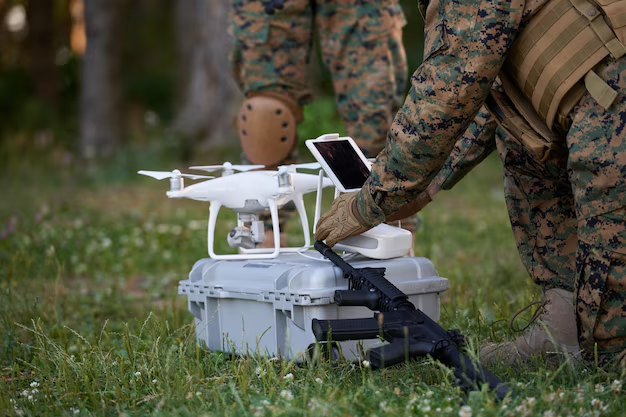
2. Sensor and Payload Data Management
Modern UAVs rely on an array of sensors (e.g., cameras, LiDAR, infrared, radar) to gather situational data. ARINC standards facilitate the efficient handling and transmission of this data to on-board systems and ground control.
- ARINC 818 ensures high-speed, low-latency video transmission for real-time situational awareness, crucial for ISR (Intelligence, Surveillance, and Reconnaissance) operations or search and rescue missions.
- ARINC 825 enables seamless integration of sensor data from multiple onboard systems, allowing payload management systems to handle and analyze data from diverse sensors efficiently.
🔹 Application in UAVs: ARINC standards enable real-time analysis of sensor data, empowering UAVs to make autonomous decisions, such as avoiding obstacles or identifying objects of interest in complex environments.

3. Remote Cockpit Interface and Human-Machine Interaction
In remote piloted UAVs, effective communication between the operator and the UAV is essential for control and mission success. ARINC standards like ARINC 661 standardize the cockpit display interfaces and human-machine interaction (HMI), ensuring the UAV pilot has consistent, reliable control.
- ARINC 661 defines the graphical user interfaces (GUIs) that display crucial flight data, sensor feeds, and mission status in a unified and intuitive format.
- These standards ensure that the operator can monitor multiple UAVs simultaneously, respond to urgent mission changes, and troubleshoot any operational issues remotely.
🔹 Application in UAVs: Operators can interact with UAVs through user-friendly interfaces, enhancing mission efficiency and reducing the learning curve associated with controlling autonomous aircraft systems.

4. Safety-Critical Systems and Fail-Safe Mechanisms
Ensuring the safety and reliability of autonomous aircraft is paramount. ARINC standards are designed to support fail-safe mechanisms and system redundancy, making them essential in safety-critical UAV operations.
- ARINC 653 supports time and space partitioning, ensuring that essential systems like flight control and navigation are not disrupted by non-critical functions.
- ARINC 429 facilitates real-time monitoring and diagnosis, enabling the system to detect failures in critical components and activate failover procedures or emergency responses.
🔹 Application in UAVs: In the event of hardware failure or a communication breakdown, ARINC standards allow the UAV to automatically switch to backup systems or enter a safe flight mode, such as returning to base or landing autonomously.
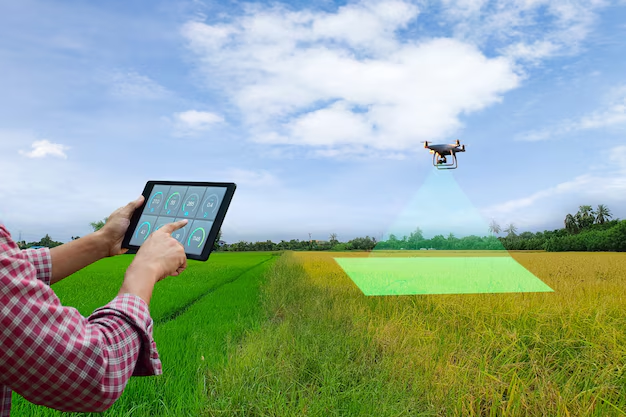
5. Data Logging, Diagnostics, and Maintenance
For UAVs to operate efficiently, regular maintenance and diagnostics are essential. ARINC standards facilitate the logging of flight data, enabling operators to analyze system performance, predict maintenance needs, and ensure long-term reliability.
- ARINC 825 (CAN Bus) enables onboard systems to log critical telemetry data related to battery levels, engine performance, and sensor health, providing real-time status updates and diagnostic reports.
- ARINC 664 (AFDX) can be used for network monitoring to detect performance issues across high-bandwidth communication channels, ensuring that UAVs stay within operational limits and perform as expected.
🔹 Application in UAVs: Pre-flight checks, post-flight diagnostics, and predictive maintenance can all be streamlined with the data transmitted and logged using ARINC standards, ensuring minimal downtime and peak operational efficiency.
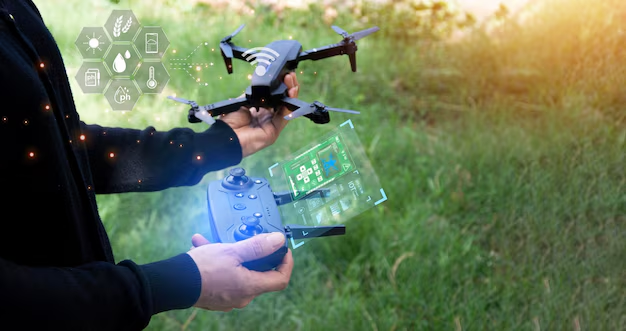
6. Communication with Ground Control Stations and Air Traffic Control
UAVs, especially those operating in national or international airspace, must communicate with ground control stations (GCS) and, in some cases, air traffic control (ATC) systems. ARINC standards enable seamless communication, ensuring UAVs adhere to aviation regulations and are integrated into the existing airspace management system.
- ARINC 429 allows real-time transmission of UAV status to the ground control station, including flight position, altitude, and speed.
- ARINC 664 (AFDX) provides high-bandwidth communication channels for data-heavy operations, such as autonomous route planning, airspace coordination, and even real-time video feeds.
🔹 Application in UAVs: Through ARINC-based communication systems, UAVs can participate in collaborative airspace management, ensuring safe and coordinated operations with manned aircraft, air traffic control, and other UAVs.
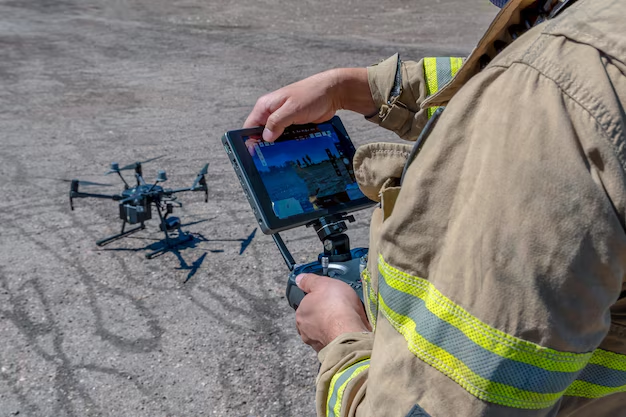
7. Integration with Urban Air Mobility (UAM) Systems
As the aviation industry embraces the future of urban air mobility (UAM), the role of UAVs will become increasingly important. ARINC standards are foundational for the development of UAM systems by enabling interoperability between UAVs, UAM infrastructure, and other aircraft.
- ARINC 818 supports the transmission of high-definition video feeds from UAVs and autonomous aircraft, which is critical for situational awareness in busy urban environments.
- ARINC 429 and ARINC 664 ensure that UAVs can integrate into UAM ecosystems, facilitating communication with smart airports, vertiports, and airspace management systems.
🔹 Application in UAVs: As UAVs become integral to urban air taxi networks, delivery systems, and medical supply transport, ARINC standards will help ensure smooth communication and coordination, allowing these UAVs to operate safely alongside traditional aircraft in dense urban airspaces.
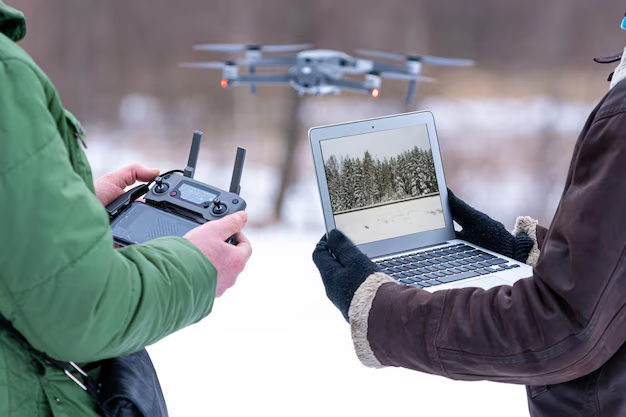
Conclusion
In the evolving landscape of UAVs and autonomous aircraft, ARINC standards play a critical role in ensuring safe, reliable, and efficient operation. These standards provide the foundation for robust communication, seamless integration, and interoperability across various UAV systems. From flight control and navigation to real-time data transmission, safety-critical systems, and autonomous operations, ARINC standards enable UAVs to function effectively in complex and dynamic environments.
As the demand for autonomous aviation continues to grow, especially with the rise of Urban Air Mobility (UAM), drone fleets, and intelligent surveillance systems, the implementation of ARINC standards will be paramount in ensuring these systems meet both industry regulations and operational requirements. By promoting interoperability, enhancing operational efficiency, and enabling advanced mission capabilities, ARINC standards will continue to shape the future of autonomous aviation and its integration into global airspace management.
With advancements in AI-driven systems, real-time data processing, and multi-UAV coordination, ARINC standards will remain indispensable in building safe, scalable, and intelligent autonomous aircraft systems. They will also play a key role in addressing the challenges of air traffic management, urban integration, and public safety, making them essential to the next generation of aerial mobility.
In conclusion, ARINC standards are not just a set of technical specifications but the cornerstone upon which the next era of UAV and autonomous aviation will thrive—empowering systems that are more intelligent, reliable, and capable of transforming industries worldwide.


